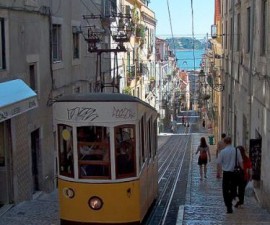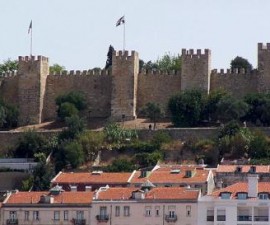The Alfama is Lisbon’s oldest neighbourhood. Stretching between St George’s Castle and the banks of the Tagus River, the area is one of Lisbon’s most visited areas, popular with locals and tourists alike.
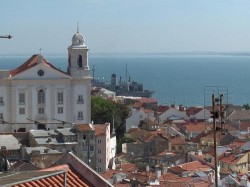
The Alfama was named after the Moorish word ‘alhama’, meaning springs or bath, in reference to the hot springs that rise in the area. To this day, many of the Alfama houses incorporate the ancient walls that were built by the Visigoths.
The Alfama was once inhabited by many of Portugal’s aristocrats – indeed some still reside here. The distinctive coats of arms on the facades of the 16th-century houses are a nod to times gone by. The district was fortunate in that many of its buildings survived the 1755 earthquake that devastated of much of Portugal’s capital city.
As a result, the streets in the Alfama area are much narrower than those of the more newly developed areas, having been built before cars and road traffic were even dreamed of. Some of the houses are located so close together that it is possible to touch the walls on each side of the street if you stand with your arms fully outstretched.
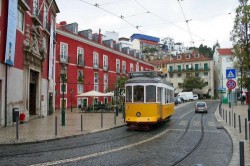
Rising from the banks of the Tagus up the hill towards the castle, the Alfama is blessed with some of Lisbon’s most breathtaking views. The best of these is afforded from St George’s Castle, though the many terraces that mark the upward weaving of the narrow streets offer their own delightful views as you make your way to the top.
Do take the time to enjoy the views from the Miradouro de Santa Luzia, where the Museum of Decorative Arts is also located in a beautiful 17th-century mansion, and from the Miradouro das Portas do Sol.
Taking a wander through the labyrinth of narrow streets in the Alfama is a must for any Lisbon visitor. The sprawling network of narrow whitewashed houses is set off to perfection by their distinctive wrought-iron balconies, azulejos and pots of brightly coloured flowers.
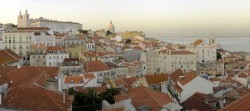
The area is full of fishmongers and local produce growers selling their wares in the colourful street markets. Here you will find a plethora of freshly grown produce brought in from the surrounding countryside and further afield to Portugal’s outlying territories, including bananas from Madeira, pineapples from the Azores, alongside fish direct from the Atlantic waters.
The Alfama is home to one of Lisbon’s oldest remaining churches, the church of St Stephen. Located on Largo de Santo Estevao, the original construction took place in the 13th century, although it has been significantly updated and largely replaced with a marble façade and shell dating back to the 18th century.
Close to the church, on the street’s south-western corner, is another of the area’s most famous viewpoints.
The Alfama is perfect for exploring in a leisurely fashion by yourself, or for joining an organized walking tour. Ask at the tourist information office for details of group and individual guided walks available.

